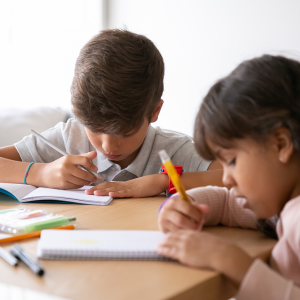How to Solve Them
 For some people, learning seems easy. They can pay attention, readily absorb new information by listening or reading, and retain and use their new knowledge. Learning disorders and disabilities affect many.
For some people, learning seems easy. They can pay attention, readily absorb new information by listening or reading, and retain and use their new knowledge. Learning disorders and disabilities affect many.
Other people experience mental blocks that make it difficult for them to pay attention, understand and remember the things they read or hear, and express themselves verbally or in writing. They may also have problems mastering specific tasks such as math, reading, and writing. Some may struggle with learning motor tasks, such as sports, and have difficulties with balance or hand-eye coordination. All these challenges are connected to various forms of learning disabilities.
A common form of learning disability is dyslexia, a problem with communication between the brain’s two hemispheres. Learning disabilities may be related to an inability to pay attention, such as Attention Deficit Hyperactive Disorder (ADHD). Some are simply caused by a child falling behind in certain core skills, such as reading, writing, or math. Learning difficulties can cause behavioral problems, such as being restless or impulsive, disorganized, acting out in a classroom, and finding it difficult to change.
Many of the problems associated with learning disabilities have a physical cause. A lack of proper nutrition and rapid swings in blood sugar levels may interfere with the ability of the brain to function properly. The brain may have been injured due to alcohol use or drugs during pregnancy, exposure to heavy metals, or a traumatic brain injury. It may also involve difficult experiences (trauma or abuse) in childhood. A lack of average early childhood experiences, such as crawling and interacting with the environment, can also be a factor in the development of learning disorders or disabilities. This month’s Sunshine Sharing discusses this topic.
Root Causes related to Learning Disorders
There are no quick and easy fixes to solving learning disabilities. However, these three main causes can get you started to overcoming learning disorders and disabilities.
- Nutrition – Junk food diets create junk food brains. Many children are eating the standard American diet (SAD) which is ladened with sugar and caffeine. A healthy brain needs fruits, vegetables, healthy fats and protein. Healthy eating is a family tradition we all need to begin to develop. Lead by example. Drink plenty of water, include protein and healthy fats as well as greens, salads, vegetables and fruit to your daily meals.
- Environmental Toxins – We are exposed to chemicals daily. Chemicals are found in our cleaning products, personal care products and processed foods. They are also used in the growing of our food as well as growing GMO strains of our food. Start reading labels and paying attention to your daily exposure to these toxic chemicals. The CDC states that over 300 chemicals are present in umbilical cord blood.
- Physical Activity – Brains need activity and that includes physical activity. Go out in nature, take a walk, join a team. Limit screen time and perform brain exercises.
Many supplement companies offer quality children’s supplements to support nutrition and a healthy brain. Consider giving your child some extra support.
